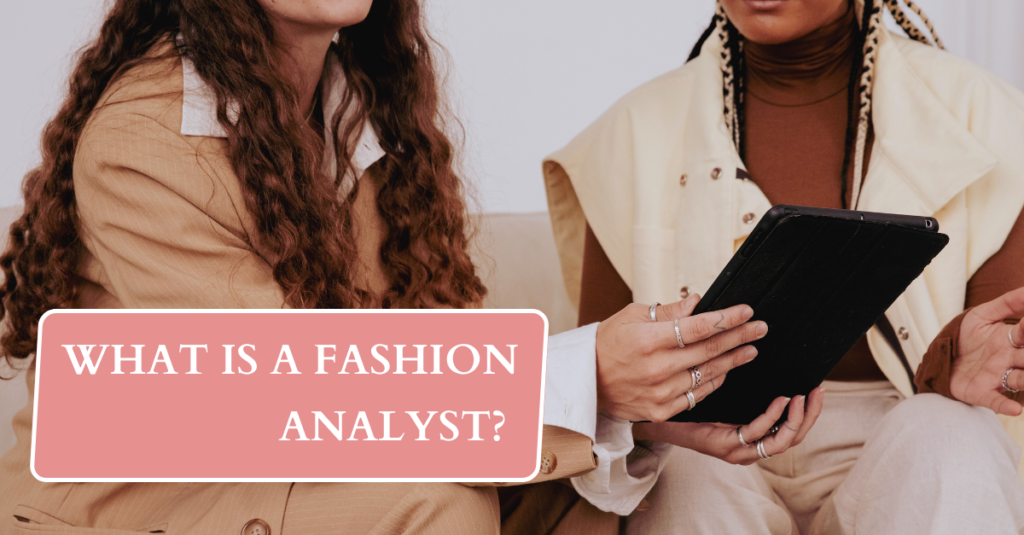What Is a Fashion Analyst?
Introduction
In the fast-paced and ever-evolving world of fashion, staying ahead of trends and understanding consumer behavior is crucial for success. This is where fashion analysts play a vital role. A fashion analyst is a behind-the-scenes expert who utilizes data-driven insights to decode the ever-changing landscape of style and consumer preferences. They employ a diverse set of analytical skills and cutting-edge technologies to forecast upcoming trends, analyze market data, and provide valuable recommendations to fashion businesses and designers. By interpreting fashion data and identifying emerging patterns, fashion analysts empower brands to make informed decisions that resonate with their target audience. In this article, we delve into the fascinating world of fashion analysts, exploring their role, qualifications, methodologies, and the impact they have on shaping the fashion industry.
The Role of a Fashion Analyst:
A fashion analyst is a skilled professional responsible for analyzing and interpreting vast amounts of data to identify emerging trends and consumer behavior patterns. Their primary goal is to provide valuable insights that help brands understand the ever-changing preferences of their target audience and make informed decisions about product development, marketing strategies, and overall business directions.
- Trend Analysis and Forecasting: One of the most prominent tasks of a fashion analyst is to predict future trends. By analyzing historical data, social media trends, consumer preferences, and runway collections, they can anticipate the next big thing in fashion. Through trend forecasting, fashion analysts offer invaluable guidance to brands and designers, enabling them to create collections that resonate with the zeitgeist and stay relevant in a rapidly evolving market.
- Consumer Behavior Analysis: Understanding consumer behavior is crucial for any successful fashion brand. Fashion analysts dive deep into consumer data, observing buying patterns, preferences, and sentiments to gain insights into what drives fashion purchases. This analysis helps brands tailor their marketing efforts and product offerings to meet the desires of their target market effectively.
- Competitor Research and Benchmarking: Fashion analysts closely monitor the competition, examining the strategies of rival brands and identifying their strengths and weaknesses. By benchmarking against the competition, fashion analysts assist brands in fine-tuning their market positioning and seizing opportunities for growth.
Skillset and Qualifications of a Fashion Analyst:
To excel in the role of a fashion analyst, specific skills and qualifications are required. These professionals are a unique blend of creativity and data-driven expertise.
- Analytical Skills: Fashion analysts must possess exceptional analytical abilities to interpret data accurately. They should be well-versed in statistical analysis, data modeling, and trend prediction methodologies.
- Industry Knowledge and Fashion Expertise: An in-depth understanding of the fashion industry, its history, and current trends is crucial for fashion analysts. Their passion for fashion allows them to connect the dots between past, present, and future style movements.
- Data Interpretation and Statistical Analysis: Fashion analysts work with massive datasets, and the ability to extract meaningful insights from raw data is essential. They employ statistical tools and data visualization techniques to make complex information easily understandable.
- Communication and Presentation Skills: Conveying the results of their analysis effectively is essential for fashion analysts. They should be adept at presenting complex data in a clear and compelling manner to various stakeholders, including designers, marketing teams, and executives.
Fashion Analyst Tools and Technologies:
As technology continues to shape the fashion industry, fashion analysts have embraced various tools and technologies to enhance their analytical capabilities.
- Data Analytics Software: Fashion analysts use advanced data analytics tools to process and analyze vast amounts of data efficiently. These software solutions enable them to uncover hidden patterns and trends that shape consumer behavior.
- Market Research and Trend Prediction Platforms: There are specialized platforms that provide access to market research data and trend prediction insights. These tools empower fashion analysts to gain a deeper understanding of market dynamics and consumer preferences.
- Social Media and Web Monitoring Tools: Social media plays a pivotal role in shaping fashion trends. Fashion analysts leverage social media monitoring tools to track the latest conversations, influencer endorsements, and viral fashion content.
- Integration of Artificial Intelligence and Machine Learning: The integration of AI and machine learning algorithms has revolutionized fashion analysis. These technologies can analyze vast datasets, identify patterns, and make accurate trend predictions, assisting fashion analysts in their forecasting efforts.
The Process of Fashion Analysis:
Fashion analysis is a systematic process that involves several stages to ensure accurate and actionable insights.
- Data Collection: Fashion analysts gather data from various sources, such as sales figures, customer feedback, social media platforms, trend reports, and market research studies.
- Data Cleaning and Preprocessing: Before analysis, the data goes through a cleaning and preprocessing phase to remove any errors or inconsistencies.
- Data Analysis and Pattern Recognition: Fashion analysts apply statistical and analytical techniques to identify patterns, trends, and correlations within the data.
- Insight Generation and Interpretation: After analyzing the data, fashion analysts derive meaningful insights and interpret their implications for the fashion brand or designer.
- Reporting and Recommendations: The final step involves presenting the findings in a comprehensive report, along with actionable recommendations for the brand to implement.
Fashion Analyst Career Opportunities:
The demand for fashion analysts has grown exponentially as the fashion industry becomes increasingly data-driven and competitive. These professionals can find various opportunities across the fashion landscape.
- Fashion Retail and E-commerce Companies: Fashion retailers and e-commerce platforms rely on fashion analysts to understand customer preferences, optimize inventory, and plan marketing strategies.
- Fashion Forecasting Agencies: Fashion forecasting agencies specialize in trend prediction and often employ fashion analysts to deliver insights to their clients.
- Fashion Publications and Media: Fashion magazines and media outlets employ analysts to identify emerging trends and provide content that resonates with their readership.
- Fashion Consulting Firms: Fashion consulting firms offer their expertise to brands looking to improve their market positioning and overall business strategies.
- In-house Fashion Analyst Positions in Brands: Larger fashion brands often have dedicated in-house teams of fashion analysts to support their decision-making processes.
Challenges and Future Trends in Fashion Analysis:
While fashion analysis is a powerful tool, it also comes with its fair share of challenges and future trends to watch for.
- Fast-paced and Ever-changing Industry: The fashion industry operates at a rapid pace, making it challenging for analysts to keep up with the constant flux of trends and consumer behavior.
- Utilizing Big Data and AI in Analysis: As data collection becomes more comprehensive, fashion analysts must harness the potential of big data and AI to extract meaningful insights.
- Ethical Considerations in Data Collection: With increasing concerns about data privacy and ethics, fashion analysts must be mindful of how they collect and use consumer data.
- Sustainability and Eco-conscious Fashion Analysis: As sustainability becomes a central focus in the fashion industry, fashion analysts will need to incorporate eco-conscious practices into their analysis.
Famous Fashion Analysts and Their Contributions:
Throughout history, certain fashion analysts have made significant contributions to the industry. Their insights and predictions have shaped the course of fashion.
Conclusion:
Fashion analysts are the backbone of the fashion industry, bridging the gap between data and creativity. By unraveling the secrets hidden within the data, these experts enable brands and designers to make informed decisions, stay relevant, and flourish in the ever-changing world of fashion. As technology continues to advance and consumer preferences evolve, fashion analysts will undoubtedly remain an indispensable force, guiding the industry into the future of style and innovation.

My name is Rohit Vagh and I’m a content writer specializing in fashion and lifestyle. I have three years of experience in this field and have written various articles. My writing style is creative and engaging, and I strive to create content that resonates with my readers. I have a deep passion for fashion and am constantly researching the latest trends and styles to make sure my readers are up to date. I’m excited to continue my career in blogging, and I’m always looking for new opportunities in the fashion and lifestyle space.





